the BIG Secret that BIG Pharma thinks you are too stupid to understand!
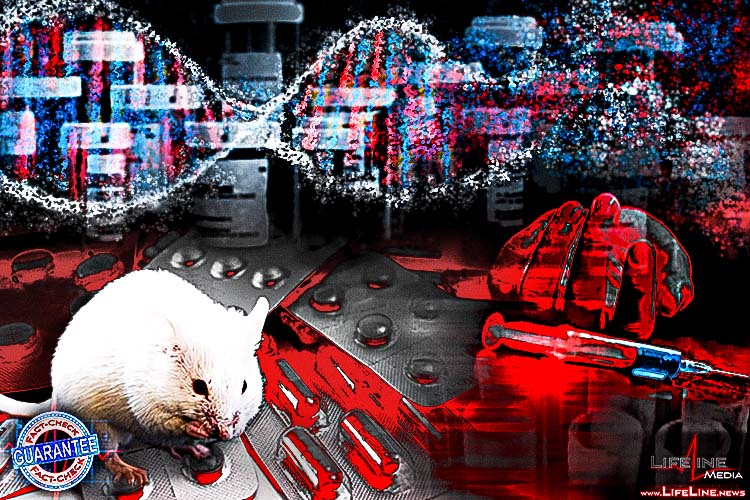
Drugs, mice, DNA, and Big Pharma corruption
See more
[Official statistics: 2 sources] [Official court document: 1 source] [Straight from the source: 1 source] [High authority and trusted websites: 2 sources]Once safe and effective, now deadly. Why are so many drugs being recalled?
By Richard Ahern – Should we blindly trust that all drugs are safe and effective because the FDA says so? Is the science behind the pharmaceutical industry always perfect?
In 2022, these are the most important questions we should be asking!
In this article, we will answer those critical questions.
We’re living in an unprecedented time of a global pandemic when the question of vaccine efficacy and medication safety has never been more top of mind. Many of us question the safety of drugs, vaccines, and therapies, but finding hard evidence to back anything up is almost impossible for a member of the public.
In fact, we’re at a point now that whenever someone dares question drug efficacy or vaccine safety, it’s a common occurrence to see that person banned for “spreading misinformation” on social media.
Once a pharmaceutical has been approved by the FDA, governments and Big Tech demand that we must never question its safety. Those who dare question the “science” of medicine testing are branded as conspiracy theorists.
And yet…
There have been 12,787 total drug recalls issued by the FDA since 2012.
On average, 1,279 drugs are recalled every year. The United States leads the way with a whopping 12,028 recalls, the country with the second most recalls is Canada, with a comparatively smaller 554 recalled drugs.
Those figures should shock you to your core, every single one of those FDA recalls is a “whoops, sorry we messed up” by the FDA.
This featured article aims to explain the reason behind the huge number of drug recalls.
More broadly this article aims to show that you’re not “anti-science” if you question the science behind pharmaceutical testing.
This isn’t a conspiracy theory, this is a scientifically published fact that Big Pharma has swept under the rug.
The disturbing information presented below has been suppressed by the scientific community and no mention of it can be found in the mainstream media. Unfortunately, because the science behind the testing of pharmaceuticals requires a reasonable understanding of biology, not to mention some thought, it’s likely most journalists lack the understanding, are too scared, or simply too lazy to report on it. That also makes it difficult for the general public to comprehend what’s at stake, which is likely why this information has remained in the shadows for so long.
Furthermore, the more sinister reason is that the truth about how drugs are tested will damage Big Pharma because it casts doubts about the safety of thousands of drugs, vaccines, and therapies that have already been “approved” for human use. Taken seriously, we could see a massive re-evaluation effort of these pharmaceuticals with a substantial number being recalled.
Is Big Pharma ethical enough to put health over profits?
Hardly!
Until this fatal flaw with drug safety gets mainstream attention, we are unlikely to see any effort being made, but it’s the responsibility of those who do know to keep shouting about it until drug companies provide solid proof that it’s been corrected and proper measures are in place to prevent future problems.
We at LifeLine Media are going to light this discovery up and do it in a way that everyone can understand, no matter what your understanding of science is. We aim to make this information accessible to everyone, with no scientific jargon, so that after reading this you will clearly understand the problems with drug testing and pharmaceutical safety.
Lives are at stake…
In a nutshell, this discovery concerns a genetic flaw in lab rodents, presumably as a result of captive breeding, which means the way they interact with drugs is not natural. Even more importantly, this raises doubts about all pharmaceutical testing on animals that have been bred in labs.
Are you ready to learn what Big Pharma thinks you’re too stupid to understand?
Lightning Navigation
Table of Contents
FDA approved drugs that were recalled
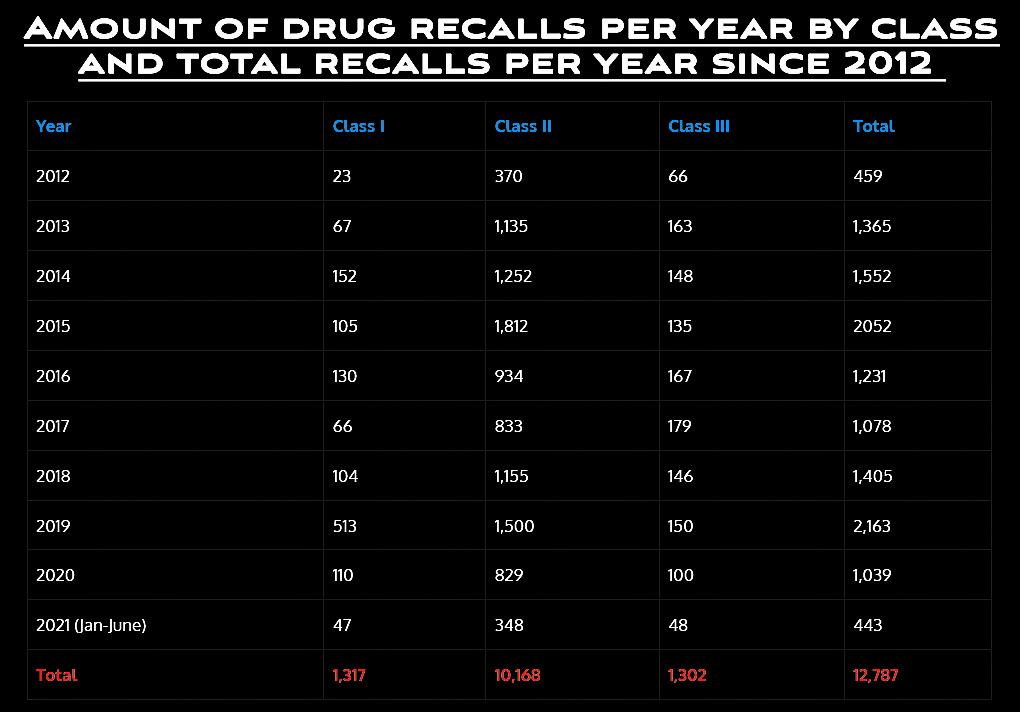
Follow the science
How many times have you heard government officials say “follow the science” when it comes to drug and vaccine effectiveness?
So, let’s “follow the science”!
Here’s a quick overview of the biology behind what we’re talking about, if you are already well-versed in this feel free to skip this section, but it’s an important backdrop to the critical issue of medical safety.
Let’s dive in…
Take a cell from your body and look at it under a powerful microscope. You will see the main cell body with a small, condensed blob inside, called the cell nucleus. Inside the nucleus is all your DNA, your complete and unique genetic profile that codes for “you”.
DNA is the code for life.
DNA is twisted and folded into pairs of chromosomes. Chromosomes are divided into sections of DNA known as genes, and each gene determines a specific characteristic. There are hundreds to thousands of genes per chromosome.
Just imagine the nucleus as a library (a small one with 46 books for humans); the chromosomes are the individual books, and the genes are the paragraphs in those books.
Scientists like things orderly, so they numbered each pair of chromosomes. To give you some examples, chromosome pair one has a gene that determines your brain size. The sex chromosomes (pair 23) have genes that determine your gender.
Humans have 23 pairs of chromosomes and 46 in total.
Different species have different numbers of chromosomes. For example, mice have 20 pairs of chromosomes and a total of 40. On the other hand, elephants have 28 pairs of chromosomes with 56 in total.
Remember, chromosomes are just coiled up pieces of DNA…
The DNA that affects an organism’s characteristics is called coding DNA because it codes for the proteins that create that organism (we are made of proteins). Genes are coding DNA. If coding DNA gets damaged, it can cause great harm to the organism because the wrong proteins are created.
Remember from biology class that cells are constantly dividing?
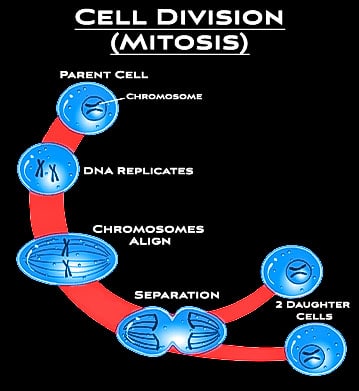
Every time a cell divides it must copy all the DNA in its nucleus. During cell division, coding DNA must be protected to prevent dangerous mutations.
Stick with me, this will make sense soon!
Not all DNA codes for proteins, there is also non-coding DNA that doesn’t code for anything; hence it is often called junk DNA.
Junk DNA is not useless!
The ends of chromosomes are formed of junk DNA and are called telomeres. Telomeres protect the coding DNA of chromosomes from damage during cell division.
Picture this:
The structure and function of telomeres are like the plastic end of a shoelace that prevents it from fraying.
Telomeres are also like a fuse on a bomb.
They’re like a fuse because every time a cell divides and its chromosomes are copied it loses a small part of its DNA. This is an unavoidable side effect of the mechanism behind DNA replication. Therefore, telomere length and longevity are directly related; as we age telomeres get worn down and shorten, but the coding DNA part of the chromosome is protected.
Infants have long telomeres, but the elderly have significantly shorter telomeres. Long telomeres are responsible for youth and faster tissue repair.
What is a telomere? - Telomeres and aging
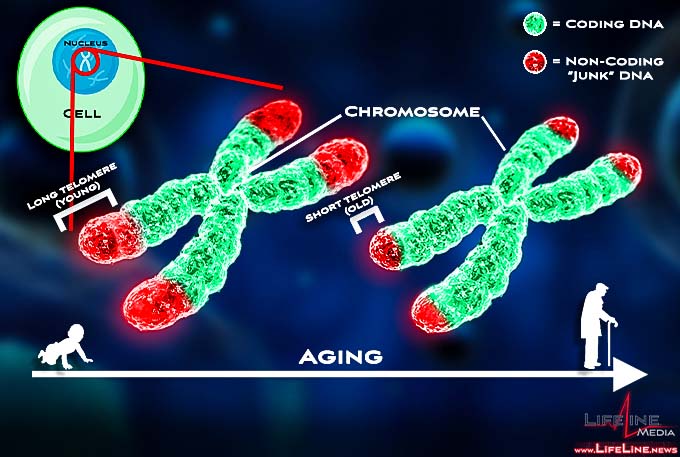
Telomeres and cancer
Telomere length and cancer are also related.
Each cell can only divide and replicate its DNA a limited number of times before the telomeres get completely worn down (the fuse is burned up) — at this point, the coding DNA is now exposed. This is known as the Hayflick limit. Most cells can usually divide about 40-60 times before they reach this limit.
Once the coding DNA starts getting damaged, dangerous mutations can happen which can result in cancer if the cell continues to divide.
To prevent this, cells have a built-in “damage control mechanism” that stops them from dividing once that telomere fuse is gone. This process is called senescence. Once a cell becomes senescent, it stops dividing and essentially does nothing, it’s like a “zombie cell”.
That’s just half of the story…
It’s also important to understand that coding DNA can become damaged in many other ways from mutagens, such as ionizing radiation, radioactive materials, and certain chemicals. If a cell’s coding DNA is damaged from a mutagen it could become cancerous. Luckily, its Hayflick limit prevents it from replicating continuously, which is a protection against cancer. If a cell with damaged coding DNA can only divide 40-60 times, that prevents it from forming a giant tumor.
Cancerous tumors are groups of cells with damaged coding DNA that continued to divide indefinitely because the damage control mechanism of senescence stopped working properly.
The build-up of senescent cells is what causes tissues to age. For example, a build-up of senescent skin cells is what leads to wrinkled and thin skin in old age. The more senescent cells a tissue has, the slower it repairs itself from damage because senescent cells can’t divide and replace themselves.
In simple terms, we have a trade-off between aging and cancer!
Remember, it all boils down to this:
A tissue made up of cells with long telomeres will take longer to age and will regenerate from damage at an enhanced rate. However, because these cells can keep dividing, they are vulnerable to cancer because they don’t have that damage control mechanism of a Hayflick limit.
How do telomeres relate to development of cancer?
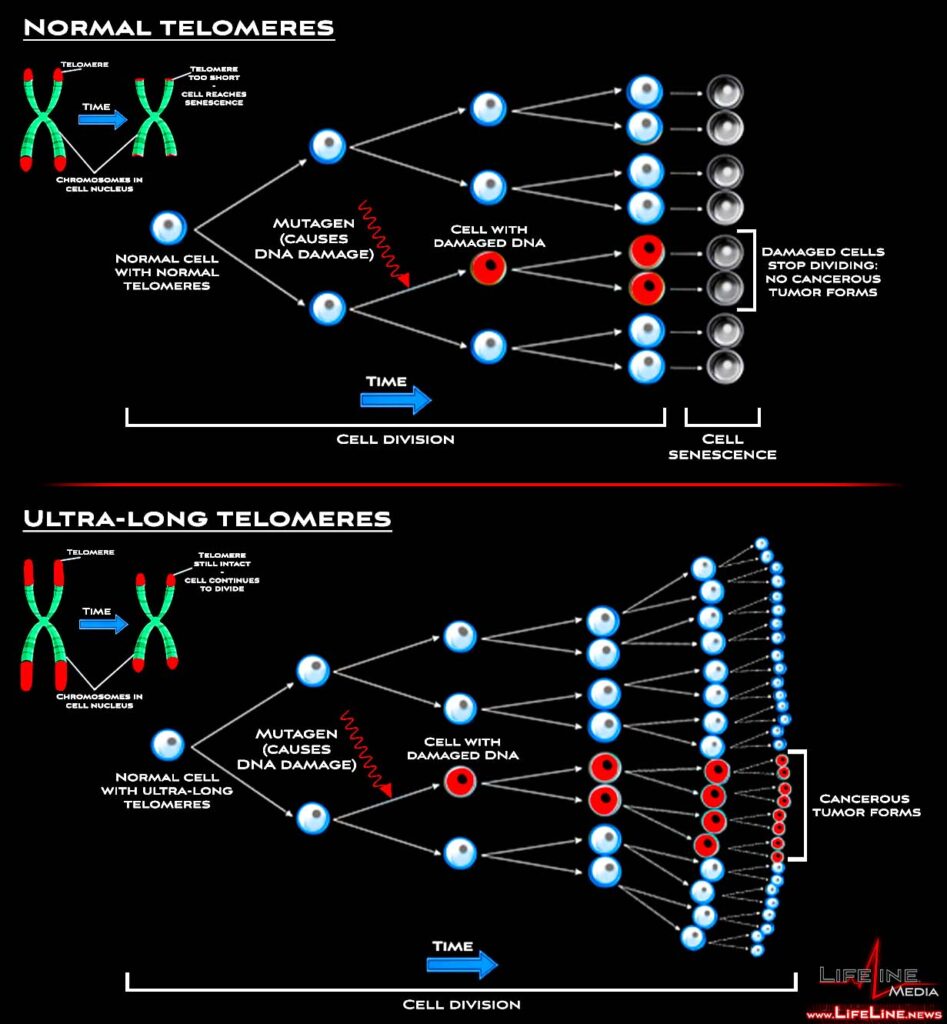
The PROBLEM with drugs - The BIG issue
Okay, so why does any of this matter to pharmaceutical safety?
It all comes down to mice…
Yes, mice!
Scientists once believed that all mice as a species had long telomeres. It was reported by Kipling and Cooke in 1990 that mice had “ultra-long telomeres” that were “many times larger than those present at human telomeres.”
Their findings were correct but here’s the kicker:
Over two decades ago, biologist Bret Weinstein hypothesized that ultra-long telomeres were only present in lab mice bred in captivity, but wild mice had normal length telomeres.
He was correct! This was a huge finding!
This was confirmed in a paper by Greider and Hemann (2000), when they compared the telomere lengths of lab mice and wild mice. They concluded that “Telomere length was considerably shorter in wild-derived strains”!
Lab mice have ultra-long telomeres.
Wild mice have normal length telomeres.
Weinstein and Ciszek mentioned in the reserve-capacity hypothesis (2002 paper) that these ultra-long telomeres were likely an “unintended consequence of captive breeding”. They believed that the conditions in breeding colonies, such as breeding mice at an extremely young age to increase reproductive output (breeding mice are retired at 8 months old) had caused unnatural mutations in telomere length.
Remember from earlier that long telomeres equal faster tissue repair?
Indeed, that is exactly what was discovered in lab mice as evidenced by Alexander, P. (1966). They commented, “The most striking fact is that even very old [lab] mice (e.g. more than 2.5 years) when killed while still fit have remarkably few pathologies and are almost indistinguishable from young animals” (in 1966 this was believed to be the case for all mice).
These lab mice bred in captivity remained unnaturally youthful, had an enhanced ability to repair damaged tissue, and were unusually resilient to injury.
They were super mice! But there’s one small catch…
The downside of this enhanced ability to regenerate cells meant that these mice were particularly vulnerable to cancer because their cells almost never reached senescence! They didn’t have that damage control mechanism that prevents cancer!
All these lab mice, if allowed to live out their lives, would not die from old age, but instead, would die from cancer.
Here’s the bad news:
These genetically mutated mice are being used in medical testing and research!
If a drug that caused cell damage was tested on lab mice, that damage could go unnoticed because the mice could repair tissue at an unnaturally rapid rate. Conversely, because of the mice’s ultra-long telomeres, their cancer susceptibility would be unnaturally high.
We have a situation of an underestimation of tissue damage and an overestimation of cancer.
This was summed up perfectly in the conclusion to Weinstein and Ciszek’s (2002) paper where they highlighted the following:
“We should therefore reconsider the use of substances deemed safe primarily because they proved harmless to ‘mice’. At the same time, safety testing with lab mice may tend to overestimate cancer risks, leading to undue caution regarding some potentially valuable substances.”
Unfortunately, no one listened, and the paper was buried by the scientific community. Drugs could pass through rodent testing trials with flying colors when in reality they could be capable of causing extensive tissue damage.
These drugs could be sitting in your medicine cabinet!
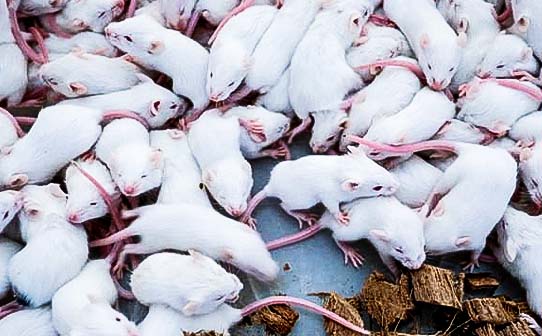
Let’s dig a little deeper…
The discovery of this genetic abnormality in lab mice, as published by Greider and Hemann (2000) was found in lab mice supplied by the Jackson (JAX) laboratory in the United States. The JAX lab is one of the world’s biggest suppliers of lab mice to researchers worldwide, particularly in the United States.
But here’s something really interesting to think about…
This discovery can only be directly attributed to JAX lab mice because they were the ones Greider and Hemann tested. If Jackson lab mice are the only lab mice that have developed these ultra-long telomeres, that could be an explanation for the unusually high drug recall rate in the United States, seeing that a majority of US researchers are supplied by the Jackson laboratory.
Most importantly:
This raises the wider issue of breeding protocols used for all animals that are supplied to researchers. Breeding generation after generation of a species in a lab environment, where natural selective pressures are not present is likely to result in unexpected and unnatural mutations.
Ultimately, a majority of drugs are made for human use. Humans have evolved over thousands of years in the natural environment, not a laboratory.
Testing medications on animals that have developed unnatural mutations from captive laboratory breeding is undoubtedly a poor and dangerous model for drug and vaccine testing.
Humans don’t have ultra-long telomeres and we don’t have an infinite capacity for tissue repair, yet some of the drugs we are unwittingly taking have been tested on animals that do!
That’s rotten science!
Why do mice matter? - Benefits of animal testing on small rodents
You may be asking…
Why do mice matter when animal drug testing is also done on larger mammals?
This is a very common misunderstanding. Usually, all drugs are tested on mice (and other small rodents), and although there are problems with using mice in research, they also offer a unique advantage to drug safety testing.
Here’s why:
Smaller animals like mice have accelerated life cycles many times faster than larger animals and humans. To put it in perspective, Dutta and Sengupta (2015) “found that one human year is equivalent to nine mice days”.
Mice are particularly useful for finding the long-term effects of drugs that would otherwise take years to be noticeable on larger animals.
This is why animal testing is necessary!
During medication testing, scientists often give small rodents super high doses of drugs in a short period. The expectation is that any side effects would likely be what a larger animal or human would experience over the long term on lower doses.
This translation of research evidence from animals to humans is not foolproof, but in theory, small rodents allow scientists to peek into the future to see the long-term effects of medication.
Think about it…
Take a drug that causes organ damage slowly and takes years to show. This would pass trials on larger mammals but could fail on mice because of their accelerated life cycle.
This is one of the main advantages of animal testing on small rodents, because it may be the only way to root out potential long-term damage caused by medications.
Drugs that cause injury to mice relatively quickly would likely indicate a potential long-term injury for humans that may take many years to show.
Can you hear this puzzle clicking together now?
When lab mice have unnaturally long telomeres and can repair cell damage at an extraordinarily fast rate, the whole model of detecting long-term side effects falls apart!
Drugs could be passing mice trials simply because the mice can repair potential cell damage too quickly for scientists to notice.
Only until that drug is approved for human use and people have been taking it for many years do the long-term side effects start to appear. This would explain why a majority of drugs are recalled many years later after being approved.
By then, it’s too late! Lives are lost, the drug is recalled, and the FDA says “oops”!
Then the cycle repeats!

Bad things the FDA has approved - Chilling examples
There are many FDA approved drugs that were once deemed safe and effective that are now known to be deadly.
The list of FDA failures is long but here’s a couple of the most chilling examples that could likely be attributed to genetic anomalies in testing animals.
Here are some of the worst pharmaceutical disasters in history…
Cerivastatin withdrawal
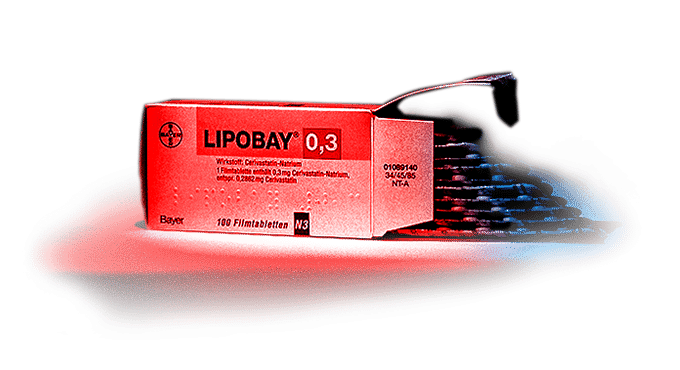
The drug that ate people alive:
One of the most dangerous FDA approved drugs was cerivastatin, also known by its brand name Lipobay, which was a synthetic statin.
Statins are widely prescribed across the globe as the most common class of drugs used to reduce cholesterol in individuals at risk of cardiovascular disease. In the US, doctors routinely prescribe over 200 million statins per year.
Lipobay was marketed by the pharmaceutical company Bayer in the late 1990s. It was withdrawn from the worldwide market in 2001 due to many reported fatalities. It was found that most of the deaths were from fatal rhabdomyolysis caused by the drug. Rhabdomyolysis is a life-threatening condition caused by rapid muscle tissue breakdown.
Lipobay was literally causing patients’ muscles to disintegrate!
When muscle tissue is broken down, it releases a protein called myoglobin into the blood that the kidneys must remove. In large quantities, the kidneys can’t filter out the myoglobin fast enough, which can cause kidney damage, and in severe cases, kidney failure and ultimately death.
Most deaths among Lipobay patients were caused by rhabdomyolysis and the resultant kidney failure. It was found that rhabdomyolysis caused by statins was 16 to 80 times higher for Lipobay compared to other statins.
How did this happen?
We can only speculate, but it’s sensible to conclude that this rapid muscle breakdown was never noticed during animal and human trials. The deadly side effect was not noticed till years later after Lipobay was approved.
Clinical trials on humans likely went smoothly as the timeframe was too short to notice this effect. However, perhaps the rhabdomyolysis would have manifested in mice trials due to their accelerated life cycle.
Unfortunately, lab mice with unnaturally long telomeres would regenerate muscle tissue and kidney damage so fast that this side effect would likely go unnoticed.
Could this tragedy have been avoided if animal experiments were performed on “normal” mice and not the laboratory-bred mutants?
That’s only one example, there are many, many more FDA approved drugs that failed.
Vioxx controversy
There’s a long list of recalled drugs that should have never made their way onto the market.
One of the most famous drug recalls was rofecoxib, commonly known as Vioxx, a nonsteroidal anti-inflammatory drug (NSAID) used to treat arthritis and acute pain. Vioxx was recalled because of reports of heart damage which led to an increased risk of heart attack and stroke.
It’s likely Vioxx caused cell damage to many parts of the body but was noticeable as heart damage because heart cells have a very poor ability to regenerate.
The cell damage caused by Vioxx should have been detected during rodent trials, but for some reason, it went undetected.
Bextra recall
A similar drug to Vioxx on the FDA recall list is valdecoxib, commonly known by its brand name Bextra. Like Vioxx, Bextra was another NSAID used to treat arthritis.
Bextra was approved in November 2001 by the FDA. It was recalled in April 2005, almost four years later. The FDA cited the reasons for the recall being “potential increased risk for serious cardiovascular (CV) adverse events” and an “increased risk of serious skin reactions”, including Stevens-Johnson syndrome.
The Bextra recall resulted in the largest criminal fine of any kind ever!
The drug company Pfizer had to pay out a record-breaking $1.3 billion criminal fine for misbranding the drug “with the intent to defraud or mislead”. Pfizer also had to pay $1 billion in civil damages.
Just let this fact sink in…
The largest criminal fine ever paid in history was by a drug company!

Rezulin recall
Also on the list of biggest FDA failures…
Troglitazone, brand name Rezulin, was used to treat diabetes and was another case of a drug that caused organ damage. Specifically, Rezulin caused liver damage.
Initially, after numerous reports of sudden liver failure in patients taking the drug, the FDA issued warnings requiring monthly monitoring of liver enzyme levels in patients.
This is shocking:
It wasn’t until a 55-year-old patient died of acute liver failure after taking Rezulin as part of a study monitored by the National Institutes of Health (NIH) that it was questioned whether monitoring enzyme levels was enough.
The NIH dropped the drug from the study, and shortly afterward an FDA epidemiologist who evaluated Rezulin estimated that it could be linked to over 430 liver failures. They found that patients had a 1,200 times greater risk of liver failure when taking the drug.
On March 21, 2000, the FDA finally recalled Rezulin after it being on the market for over three years.
Could the Rezulin withdrawal have been prevented if liver damage was detected during rodent trials?
These drugs are just a small sample of a long list of FDA approved drugs that were later recalled, but they demonstrate how drugs get approved and then recalled many years later (and many lives later) when long-term side effects start to rear their ugly head.
In a nutshell:
Any tragic incident of medication being recalled due to some form of organ/tissue damage could have been potentially prevented if rodent trials had been conducted on genetically normal species. From a drug testing perspective, mice and small rodents are invaluable assets but only if they are representative of nature.
To make matters worse…
What about the number of potentially beneficial drugs that may have been discarded because they were viewed as increasing cancer risk in mice that were already predisposed to cancer!?
I guess we’ll never know the answer to that question.
Are drugs safe? - What can we do now?
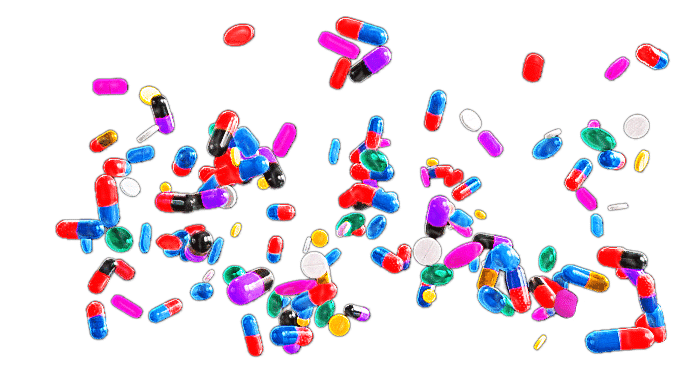
The message is clear:
The whole process of evaluating drug effectiveness and safety is gravely flawed. The science of the pharmaceutical industry is rotten!
Even without knowing the science, just looking at how many FDA approved drugs have been recalled is clear proof that something is wrong.
Sadly, there really is an extensive list of FDA approved drugs that kill and have destroyed families.
Needless to say, science has been hugely beneficial to the human race, but it is not perfect, or perhaps more accurately, scientists are not perfect. Questioning science does not make you “anti-science”, it makes you pro-science because that’s what science is about.
Scientists question previous research, they make a hypothesis and then test it. For social media companies and governments to call people “anti-science” when they question a vaccine efficacy explanation is crazy. That is “anti-science”!
Perhaps researchers should have anticipated that huge rodent breeding programs could result in genetic variation that wouldn’t occur in nature, but what matters now is acknowledging the error and correcting it.
Yet in an industry driven by profits, is Big Pharma trustworthy enough to admit mistakes?
Unfortunately, the answer is no, and it’s clear from past FDA failures that drug companies will do anything in their power to prevent massive recalls. They would rather say “sorry” and pay a small number of damages to the victims than acknowledge and root out the key issue.
There could potentially be hundreds, even thousands of dangerous medications that have slipped through the net because of flawed rodent trials. A re-evaluation effort and potential recall of that magnitude could bankrupt every drug company on the planet — but the health of patients is more important!
But what can YOU do?
Knowledge is power, and educating the public and journalists about the science behind this issue is the first step. With enough people informed, lawmakers may eventually listen, and government intervention can take effect.
It’s over to you, you are not powerless, the internet gives everyone a voice that can reach millions. Give this article a SHARE, tell everyone you know, and don’t stop until things change.
“Be the change you wish to see in the world!”
We need YOUR help! We bring you the uncensored news for FREE, but we can only do this thanks to the support of loyal readers just like YOU! If you believe in free speech and enjoy real news, please consider supporting our mission by becoming a patron or by making a one-off donation here. 20% of ALL funds are donated to veterans!
By Richard Ahern – LifeLine Media
Contact: Richard@lifeline.news
Published:
Last Updated:
References (fact-check guarantee):
- FDA Drug Recall Statistics: https://www.maylightfootlaw.com/blogs/fda-drug-recall-statistics/ [Official statistic]
- Deoxyribonucleic Acid (DNA): https://www.genome.gov/genetics-glossary/Deoxyribonucleic-Acid [Government website]
- Mitosis / cell division: https://www.nature.com/scitable/definition/mitosis-cell-division-47/ [Academic journal/website]
- The Case for Junk DNA: https://www.ncbi.nlm.nih.gov/pmc/articles/PMC4014423/ [Academic journal/website]
- Telomeres, lifestyle, cancer, and aging: https://www.ncbi.nlm.nih.gov/pmc/articles/PMC3370421/ [Peer-reviewed research paper]
- The Hayflick Limit: https://embryo.asu.edu/pages/hayflick-limit#:~:text=The%20Hayflick%20Limit%20is%20a,programmed%20cell%20death%20or%20apoptosis. [Academic journal/website]
- Senescence and aging: Causes, consequences, and therapeutic avenues: https://www.ncbi.nlm.nih.gov/pmc/articles/PMC5748990/ [Peer-reviewed research paper]
- Environmental Mutagens, Cell Signalling and DNA Repair: https://www.nature.com/scitable/topicpage/environmental-mutagens-cell-signalling-and-dna-repair-1090/ [Academic journal/website]
- Hypervariable ultra-long telomeres in mice: https://www.nature.com/articles/347400a0 [Peer-reviewed research paper]
- Bret Weinstein on “The Portal” (w/ host Eric Weinstein), Ep. #019 – The Prediction and the DISC: https://www.youtube.com/watch?v=JLb5hZLw44s [Straight from the source]
- Wild-derived inbred mouse strains have short telomeres: https://pubmed.ncbi.nlm.nih.gov/11071935/ [Peer-reviewed research paper]
- The reserve-capacity hypothesis: evolutionary origins and modern implications of the trade-off between tumor-suppression and tissue-repair: https://www.gwern.net/docs/longevity/2002-weinstein.pdf [Peer-reviewed research paper]
- Alexander, P., 1966. Is there a relationship between aging, the shortening of life-span by radiation and the induction of somatic mutations?: Perspectives in Experimental Gerontology. pp. 266-279. [Peer-reviewed research paper]
- Men and mice: Relating their ages: https://pubmed.ncbi.nlm.nih.gov/26596563/ [Peer-reviewed research paper]
- Cerivastatin: https://pubchem.ncbi.nlm.nih.gov/compound/Cerivastatin [Academic journal/website]
- National Trends in Statin Use and Expenditures in the US Adult Population From 2002 to 2013: https://jamanetwork.com/journals/jamacardiology/fullarticle/2583425 [Official statistic]
- Rhabdomyolysis: Pathogenesis, Diagnosis, and Treatment: https://www.ncbi.nlm.nih.gov/pmc/articles/PMC4365849/ [Peer-reviewed research paper]
- Clinical pharmacological explanatory models of cerivastatin-associated rhabdomyolysis: https://onlinelibrary.wiley.com/doi/abs/10.1046/j.1563-258X.2003.03029.x [Academic journal/website]
- Vioxx (rofecoxib) Questions and Answers: https://www.fda.gov/drugs/postmarket-drug-safety-information-patients-and-providers/vioxx-rofecoxib-questions-and-answers#:~:text=Vioxx%20is%20a%20COX%2D2,3. [Government website]
- Valdecoxib: https://en.wikipedia.org/wiki/Valdecoxib [High authority and trusted website] {Further reading}
- Stevens-Johnson syndrome/toxic epidermal necrolysis: https://rarediseases.info.nih.gov/diseases/7700/stevens-johnson-syndrometoxic-epidermal-necrolysis [Government website]
- U.S. v. Pfizer, Inc. – Settlement Agreement: https://www.justice.gov/usao-ma/press-release/file/1066111/download [Official court document]
- Rezulin: https://www.accessdata.fda.gov/drugsatfda_docs/label/1999/20720s12lbl.pdf [Government website]
- Troglitazone: https://en.wikipedia.org/wiki/Troglitazone [High authority and trusted website] {Further reading}

I am making $90 an hour working from home. I never imagined that it was honest to goodness yet my closest companion is earning $16,000 a month by working on a laptop, that was truly astounding for me, she prescribed for me to attempt it simply. Everybody must try this job now by just using this article.. http://Www.Works75.Com
My pay at least $300/day.My co-worker says me!I’m really amazed because you really help people to have ideas how to earn money. Thank you for your ideas and I hope that you’ll achieve more and receive more blessings. I admire your Website I hope you will notice me & I hope I can also win your paypal giveaway.
→ → http://income7pays022tv24.pages.dev/
I am making $90 an hour working from home. I never imagined that it was honest to goodness yet my closest companion is earning $16,000 a month by working on a laptop, that was truly astounding for me, she prescribed for me to attempt it simply. Everybody must try this job now by
just using this article.. http://Www.HomeCash1.Com
Want To Work From Home Without Selling Anything? No Experience Needed, Weekly Payments… Join Exclusive Group Of People That Cracked The Code Of Financial Freedom! Learn More Here
Copy here……………………………………….https://www.worksclick.com
My Boy pal makes $seventy five/hour at the internet. She has been without a assignment for six months however remaining month her pay have become $16453 genuinely working at the internet for some hours.
open this link………. Www.Workonline1.com